Olympic Refugee Team Grows its Legacy with Eyes Locked on Toyko 2020
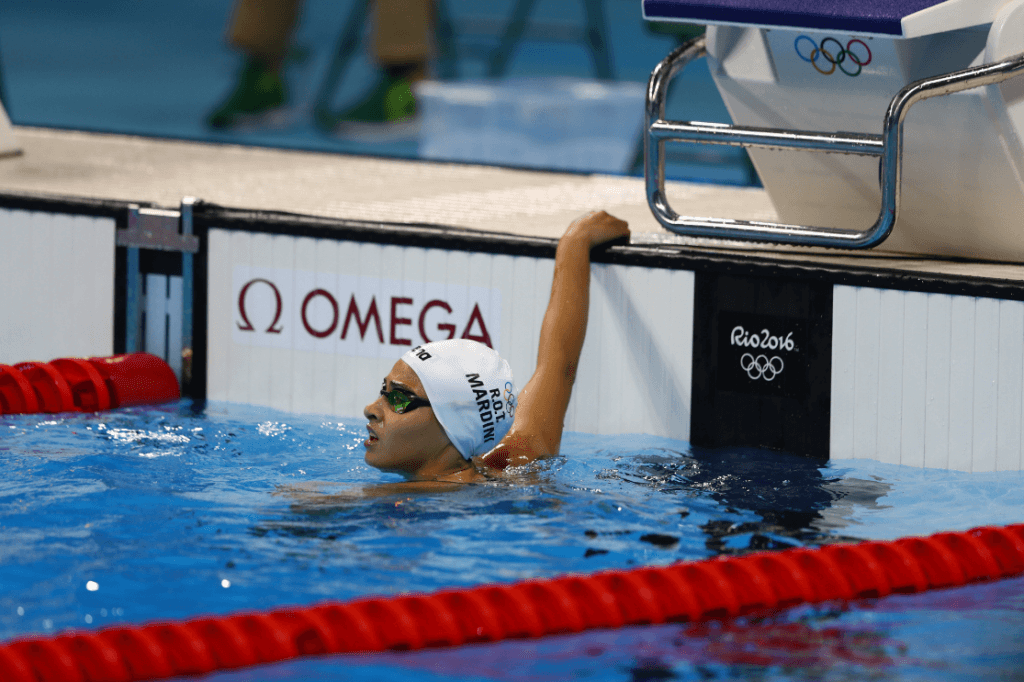
By Claire Russell, Swimming World College Intern.
Every four years, nations unite for the celebration of sports and achievements at the Olympic Games. It is the one magical time when each country seems to put aside differences and march together as one. We shake hands. We have one common goal. Despite living in a world with developed countries typically having more opportunities than undeveloped countries, socioeconomic status goes to the wayside at the Olympic Games. Whether the athletes represent the United States, Russia, China or Zimbabwe, almost every country has a chance to compete.
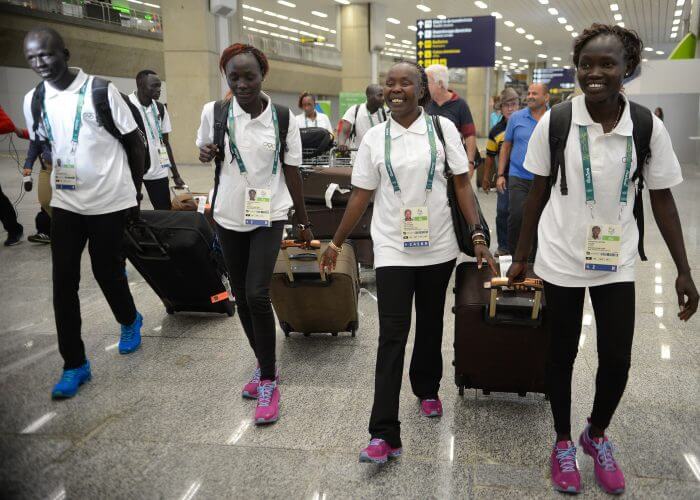
Photo Courtesy: Tomaz Silva/Agência Brasil
But what about the elite athletes who have no country to call home – no country to fight for? What about those who fled their country due to civil war, dodging bullets and avoiding bombs just to get to practice?
These athletes are often forced to seek refuge outside of their country in order to train and compete. Displaced from their roots and homes, they pursue their talents at the greatest risk of all – their very lives. With no official support from their home community and elite organizations, these athletes were largely left to fend for themselves. That is, until the United Nations General Assembly meeting in 2015.
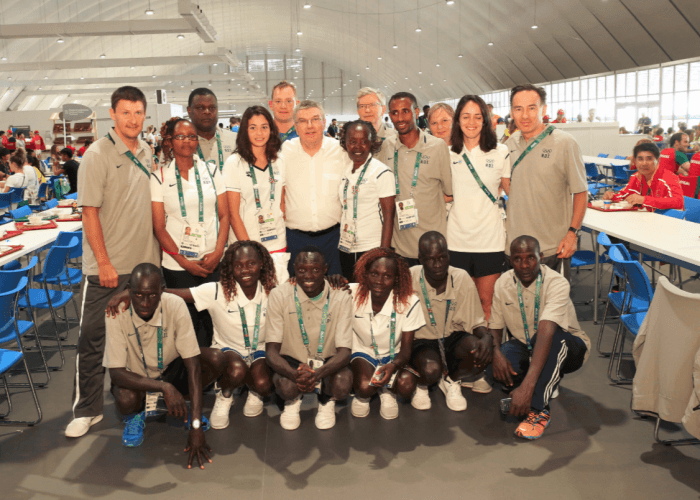
Photo Courtesy: Twitter, @RefugeesOlympic
The Assembly meeting recognized the staggering worldwide refugee crisis, noting that an estimated 68.5 million people in the world were considered refugees. To put this number in perspective, that’s approximately one in every 113 people in the world’s population. The Assembly acknowledged that this group of individuals represents a special society or citizenry of their own. And from this meeting, these refugees were given a voice: The Olympic Refugee Team was born.
Why was the team formed?
IOC President Thomas Bach announced the creation of the Refugee Olympic team in 2015 – the first of its kind – to compete at the 2016 Olympic Games in Rio. The purpose was to bring worldwide attention to the global issue and to provide hope for all the refugees. Ten months after the statement, 10 athletes who originally hailed from Ethiopia, Syria, South Sudan and the Democratic Republic of the Congo were selected to compete and represent the ROT.
2016 Rio Olympics
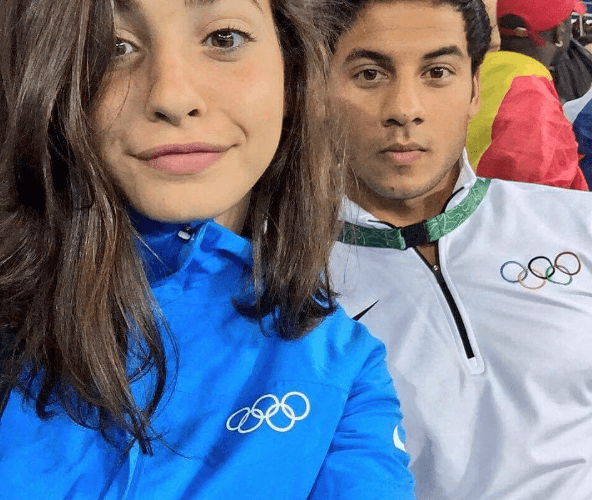
Yusra Mardini and Rami Anis pose for a selfie in their Olympic gear. Photo Courtesy: Twitter, @RefugeesOlympic
The 2016 ROT made its debut with 10 athletes, marking a giant step in global athletic history and in the lives of refugees. Embodied in this team was hope – hope that the refugee population was seen, heard and had a voice. The team provided something to look forward to and find happiness in during a time of uncertainty.
Swimming’s Representation in the ROT
Two outstanding swimmers who represented the ROT in Rio were Yusra Mardini and Rami Anis.
Yusra Mardini’s Story
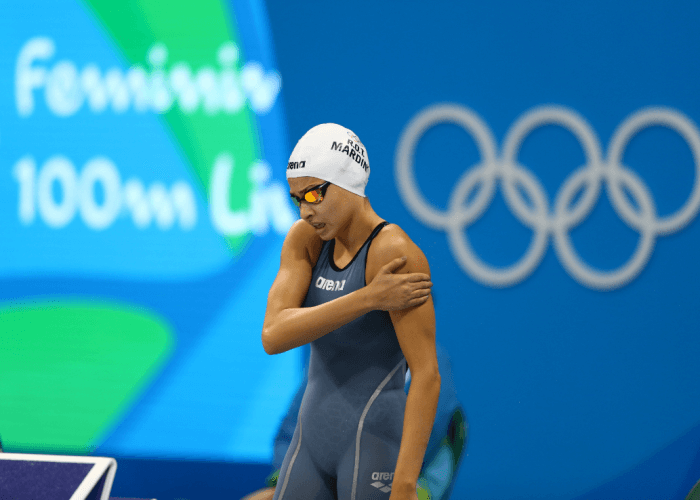
Yusra Mardini behind the block at the 2016 Rio Olympics. Photo Courtesy: @RefugeesOlympic.
Mardini’s refugee journey began when she and her sister fled the bloody civil war in Syria that broke out in 2011, escaping through Lebanon and Turkey. The next step of the journey entailed overcrowding a dingy – fit to safely carry only six adults – with 20 refugees bound for Greece. Little did they know, Mardini and her sister would play crucial roles in saving their lives.
During the passage, the dingy’s motor failed and the boat took on water. Along with one other passenger, the two sisters jumped off their boat into the Aegean Sea and swam for three hours to prevent it from capsizing. All passengers’ lives were saved.
Upon arriving to the mainland, the girls eventually traveled through Europe to start retraining in Germany. In June 2016, Mardini was one of ten extraordinary athletes selected for the ROT. She competed in the 100m freestyle and the 100m butterfly at the 2016 Rio Olympics. Mardini won a 100m butterfly heat against four other swimmers with a time of 1:09.21, ranking of 41st among 45 entrants.
Mardini seeks to spread the message of strength and hope to all the refugees in the world. In an interview with NBC News, she shares:
“I hope I can do something really good for them, so I can give the people hope and inspire them that you can’t stop, even if you lose someone, even if it’s war, even if you lose your house, you have to continue.”
Mardini has since written her own book that shares her story in detail. According to Deadline Hollywood, her book will be turned into a movie that will be released in late 2019.
Rami Anis
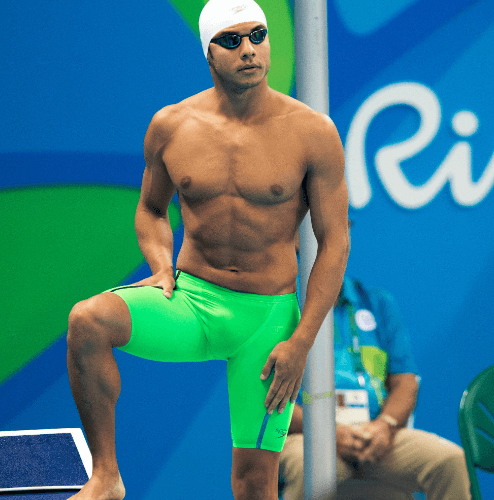
Rami Anis prepares for his heat at the 2016 Rio Olympics. Photo Courtesy: Twitter, @RefugeesOlympics
Another 2016 Olympian with a similar story is Rami Anis. He began swimming at the age of 14 in his home country of Syria. Yet when bombs and kidnappings became more common in his town, his family sent him off to Istanbul to live and train. Although he could train, Anis was barred from competition because he lacked citizenship. This would not do.
When faced with the option to risk the dangerous passage to Greece, Anis unblinkingly stared down the Agean Sea. Riding an inflatable dinghy much like the one Mardini and her sister saved, Anis made it to the Greek island of Samos with hopes to officially race again. His strength, passion and drive for swimming led him to earn a spot on the 2016 Tokyo Olympic Games, competing in the 100m butterfly and 100m freestyle.
The Creation of the Olympic Refugee Foundation
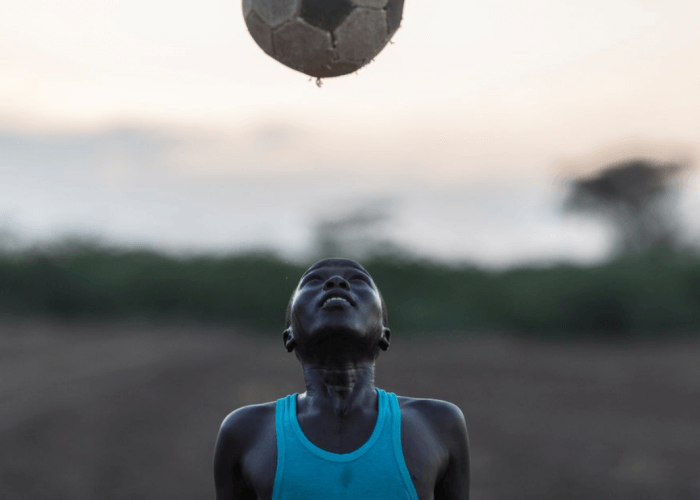
Photo Courtesy: Twitter, @TeamRefugees
As the popularity of these elite refugee athletes began to spread, more donors were willing to step up and contribute towards their cause. In September 2017, at the International Olympic Committee meeting in Lima, the IOC launched the Olympic Refugee Foundation. The foundation helps to support and fund the protection, development and empowerment of the youth in unsafe environments through sports. The foundation strives to do the following:
“Create safe, basic and accessible sports facilities in areas where there are refugees, a displaced migrant population or internally displaced people, where all children and young people can play sports and take advantage of sport’s multiple benefits; and develop sporting activities that can be successfully implemented within these safe environments.”
The foundation receives generous gifts from Olympic Movement partners, governmental institutions and private donations to keep the ROT’s dreams alive.
Tokyo 2020 Team
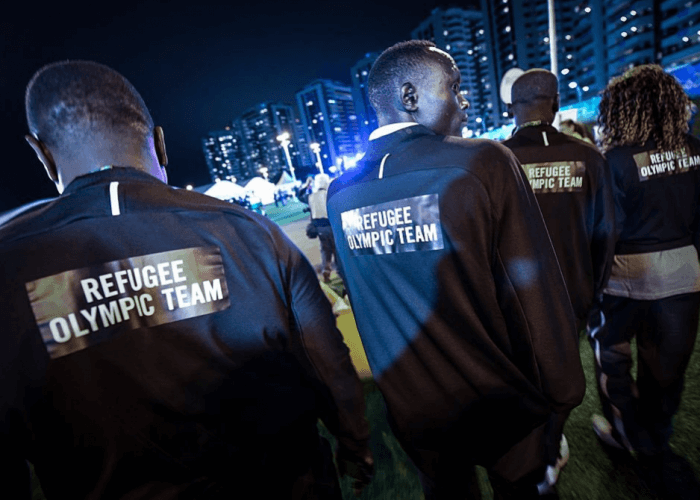
The ROT walks around Olympic Village in Rio. Photo Courtesy: Twitter, @RefugeesOlympic
The Olympic Refugee Team’s legacy will continue in Tokyo 2020. There are currently 37 Refugee Athlete Scholarship-holders, 10 of whom are the original athletes from the inaugural ROT. In addition, a group of athletes are preparing at the Tegla Loroupe Refugee Training Centre in Kenya with the support of the Olympic Solidarity Refugee Athletes Support Programme.
The announcement that refugee athletes would compete in Tokyo was welcomed by the UN High Commissioner for Refugees, Filippo Grandi. “In 2016, the Rio refugee team captured the imagination of people around the world and showed the human side of the global refugee crisis through sport,” Grandi said in a statement. “I’m delighted that this tradition is to continue in Tokyo. Giving these exceptional young people the opportunity to compete at the very highest levels is admirable.”
What Comes Next for Tokyo
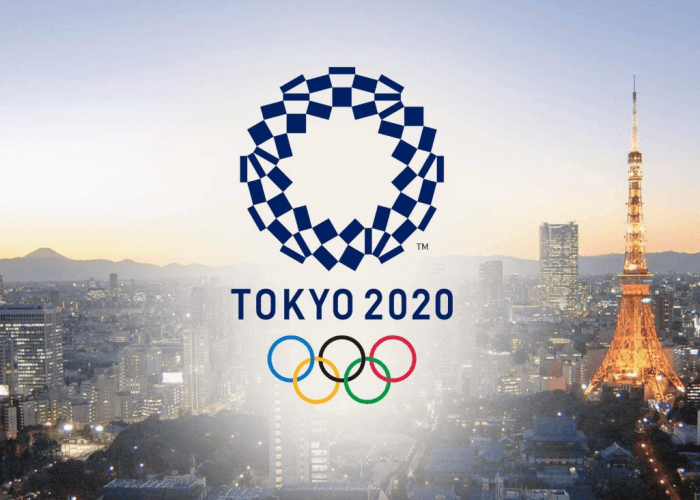
Photo Courtesy: Twitter, @RefugeesOlympic
Refugee athletes training to qualify for Tokyo 2020 are supported through training grants from Olympic Solidarity and their host National Olympic Committees (NOCs). This support not only provides physical training but also life skill training to build a successful future beyond sport. The Olympic team for Tokyo 2020 will be announced next June after a selection process. The selection process is determined by a joint decision between the IOC, UNHCR, the National Olympic Committees, and the International Sport Federation. The IOC President Thomas Bach revealed in a statement that they have “some confidence that the team will be bigger than that for Rio 2016.”
Instilling Hope into War-Ridden Lives
The Olympic Refugee Team represents far more than just athletes going for gold. These athletes are fighting for the chance to show their families and friends back home that there is hope for a better life in the midst of brokenness and loss. Each one has bravely overcome tremendous obstacles to escape their home country for a chance at a brighter life. They now have the chance to shine at the Olympic Games for years to come. They have certainly earned it.
Above all, these incredible athletes have earned gold before even setting foot in Tokyo.
–All commentaries are the opinion of the author. They do not necessarily reflect the views of Swimming World Magazine nor its staff.




filled with so much that is heart-life meaningful. grateful !
What a wonderful, heart warming article. I am thrilled to know assistance is being given to athletic refugees!